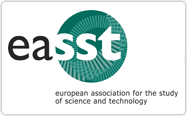Imaginings of Empowerment and the Biomedical Production of Bodies
the story of Nonoxynol-9
DOI:
https://doi.org/10.23987/sts.65266Abstract
In this paper, I will explore the development of vaginal microbicides (female-initiated HIV prevention methods designed as gels, films, sponges and rings women can insert vaginally before having sex to protect themselves against HIV infection) as a women’s health intervention that entangles feminist ideals of empowerment with biomedical enterprise. The field of vaginal microbicide development pays heed to both the specific biological vulnerabilities of ‘the female body’ that are understood to make women more susceptible to HIV infection as well as the social gendered power relations that leave women at a higher risk of HIV within the power dynamics of their sexual relationships. I am particularly interested in the ambiguity that emerges between the effects of a biomedical search for facticity through clinical trial testing and advocacy promises of empowerment, which I will explore through analysing the clinical trials of Nonoxynol-9 microbicide candidates in the early 1990s – a microbicide candidate that was continuously linked to vaginal ulceration and consequently a potential increase in receptivity to HIV. Through an interrogation of clinical trial reports, advocacy documents and a social science study in which the women trial participants articulated Nonoxynol-9 as their “protector”, I argue that the story of Nonoxynol-9 shows an intrinsic ambiguity between the field’s feminist promise of empowerment and the effects of the biomedical search for an effective microbicide candidate. Drawing on the work of Karen Barad, I argue that agential realism is able to provide a robust analytical framework to interrogate the political and ethical effects of this ambiguity that the field’s own discourse of empowerment does not provide.
Key words: HIV, vaginal microbicides, agential realism, global health, new materialism





